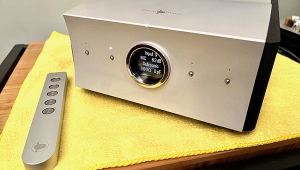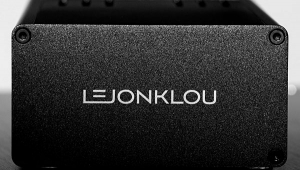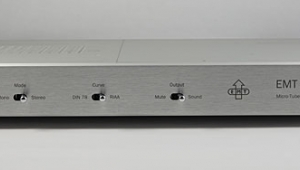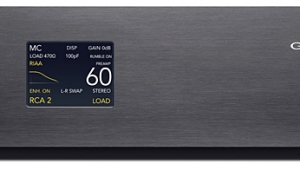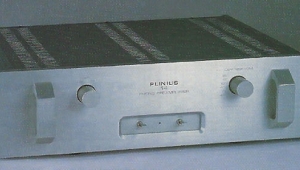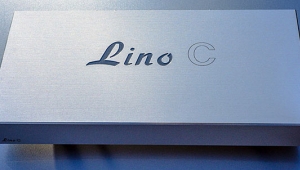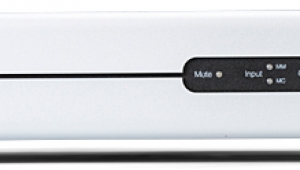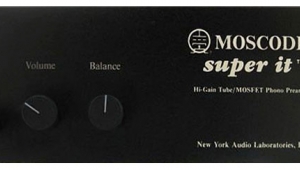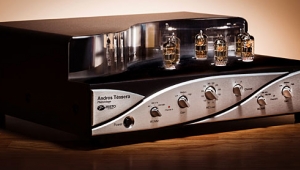| Columns Retired Columns & Blogs |
Balanced Audio Technology VK-P10 phono preamplifier Page 2
I looked down at my paunch, sighed heavily, and fixed Victor with my best "Pray continue" look.
"...so you do nothing but diet and exercise like crazy; you have no life, but you get down to 160 lbs. Or you don't do anything drastic, enjoy yourself, and wind up at 170 lbs, a little above of your target. Which would you prefer, Jonathan?"
Yup. So BAT builds symmetrical, bipolar power supplies that let their equipment breathe. (Symmetrical means the power supply generates both plus and minus 150V rails rather than relying on the ground—full of schmutz as it often is—for the return.) Light regulation but heavy filtering is the word of the day.
Victor: "We also believe plate-loaded triode circuits always sound best, so there are no cathode followers in the VK-P10's output. And no cascoded circuits either. Still, the output impedance of the phono stage is low enough not to be a concern in 'normal' systems. By that I mean a typical line-stage preamp, such as our VK-5, with an input impedance of at least 10k ohms, and interconnect under 100' or so."
Build considerations
I was surprised to learn the VK-P10 is built up of galvanized steel, an inherently magnetic substance. According to Victor, this offers a degree of attenuation of the 60Hz component that surrounds us all. (New York is such a radiated environment, it's a wonder we don't wake up toast some mornings. Perhaps we do...)
I learned that this build sensibility is reflected everywhere in the design. For instance, mass-damping the chassis top cover might give the unit a more substantial "feel" but have little actual effect. Rather, Victor uses an "intelligent" approach to vibration control. For example, the bottom chassis is coupled to a ½" vibration-absorbing plate, which is an integral part of the structure. The PC board is bolted to this plate in 17 places! BAT analyzed the vibration modes and found the nodes and antinodes. Once these were known, sensitive components—such as the tubes and the potted paper-in-oil capacitors—were positioned at the antinodes.
BAT also uses ceramic tube sockets with silver contacts, and...the list goes on and on. I strongly suggest all interested parties contact BAT for a copy of their various White Papers. They do a terrific job of explaining, in very cogent fashion, the engineering and implementations featured in their designs. It is truly fascinating reading.
Versatility
The input stage incorporates most of the elements responsible for the VK-P10's versatility. That includes user-selectable cartridge loading of resistance (100, 1k, or 10k ohms, or User Selected) and capacitance (100 picofarads, 470pF, 1000pF, or User Selected), or any parallel combination. A 47k load resistor is permanently connected to the cartridge input as the default. Female posts are provided, along with pin terminations for your favorite audiophile cap or resistor. The factory will be happy to oblige you in these matters.
There's a switch to choose between high and low gain modes. Low cuts the output by 6dB for cartridges with afterburners. There's yet another switch to choose between Direct and Step-Up modes, which introduces a pair of transformers into the outputs. The trannies feature both 12 and 18dB taps, chosen...by throwing a switch, of course!
Overall, this provides the user with a range of between 50 and 83dB of gain to work with. The phono stage should function with cartridges ranging in output from 0.1mV to 5mV powerhouses. If you can't get your cartridge to settle in, give it up.
Loading
Because the VK-P10 is so flexible, I futzed and fiddled with its many settings. I tried the board-mounted values of 100, 10k, and 100k ohms. I also tried a few Holco resistors of differing values that Victor had left with me. My conclusion is that there are no hard'n'fast rules when it comes to cartridge loading. Try it with your cartridge of the moment and listen for the result. Trust me on this-you will easily hear the difference. My advice is to find what pleases you and go with that. Don't read me or anyone else who dictates what you should do in every case. There is no "every case."
Take the Symphonic Line RG-8. Well...let's leave it here for now. It likes a bit of loading, but it's not very happy at 100 ohms. I preferred the 1k ohm setting I used throughout the test period, with no capacitance switched in. An input impedance of 10k or completely unloaded at 47k ohms was even better, but rather too noisy for RFI-rich New York. It's better to let things be what they are, what?
Sound
I eyed the system as I sat down to do some critical listening. (Can we find a less clinical way to describe this, I wonder?) Yes, it's true, analog is a pain in the ass, it takes up a lot of time, and one has to be completely obsessed and demented to go through it all. But when everything's just right...ah, the wonder.
I settled on the RG-8 for most of the review period. It made a wonderfully synergistic match with the VK-P10. The cartridge sounded impressive at an initial 1.4gm VTF. With a dab of Mortite on the headshell, the palpability and "body" improved. (I keep 1/10-gram Mortite boogers handy for this purpose. Can you say, "Get a life!"?)
- Log in or register to post comments
